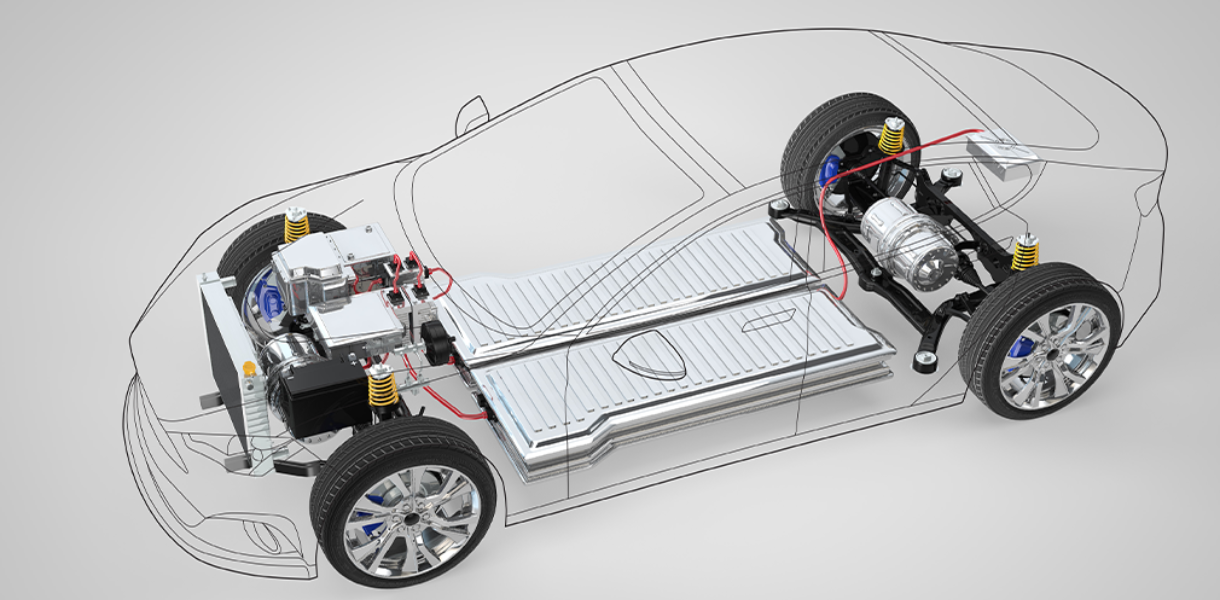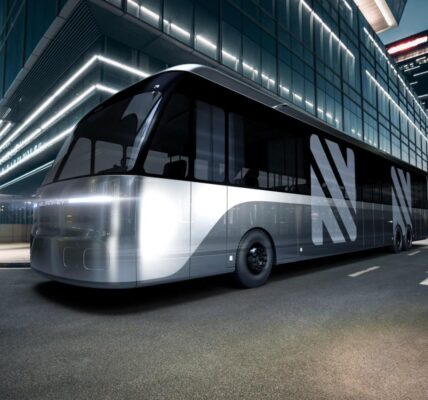North American And European Commercial Vehicle Electric Drivetrain Growth Opportunities
The shift to electric powertrain calls for significant changes in vehicle architecture and design to accommodate critical power components such as batteries, fuel cells, and hydrogen storage.
Commercial vehicles, although accounting for a minuscule proportion of the total VIO, are the largest polluters due to their nature of the operation (higher payload and longer travel). OEMs have set targets, especially in North America and Europe, to completely transition to zero-emission portfolios, and they aim to do this as early as 2040.
A heavy-duty battery-electric truck needs an onboard battery of several tonnes to achieve the long-range required to suit specific use-cases. Electric powertrain will help manufacturers meet this requirement as the design removes most of the traditional downstream powertrain components from the vehicles.
Effectively, a vehicle will only require one motor, and it will be supported by other electric components. Manufacturers are looking at different commercial vehicle electrification topologies, with each offering specific advantages. They opt for the drive topology that best suits their product performance expectations.
The eAxle, which is modular, compact, and scalable, is the most active area for several OEMs as eAxles completely remove the need for propeller shafts and larger axles. This frees space and allows the battery packs to be mounted between the frame rails. Limitations prevail in terms of power output and the load-bearing capacity of these electrification concepts.
The placement, capacity, and utilization of the motor offer different characteristics that can be leveraged for different operational requirements. The electrification of the drivetrain components also opens opportunities for lightweighting and lower maintenance, mainly due to the reduction in the number of components.
Conventional commercial drivetrain component suppliers are increasingly investing in the electrification of their core portfolios, in line with electrification market demands. Several small companies have been acquired by large incumbents that are vertically integrated, to expand technical capabilities, improve production output, and develop a robust supply chain. Companies with expertise in motors, inverters, and power electronics are of the most interest to these commercial vehicle drive train component suppliers.
The ability to demonstrate in-house production and system capabilities results in cost favorability and manufacturability which, ultimately, is attractive to the manufacturer market; however, companies also choose to stay within their existing product development and offering domains and obtain the required components from preferred sources. OEMs choose different product solutions from these suppliers based on their performance requirements.
Hence, suppliers offer solutions either as a standard or as integrated solutions. Integrated solutions offer the advantages of calibrated component packaging and modularity. Comprehensive end-to-end drivetrain solutions, including power supply and system software, are packaged and can be integrated with different vehicle platforms, either during production or existing vehicle conversion.
The sustained impact of the COVID-19 has impacted the progress of electric vehicle development. Nevertheless, several OEMs have presented their electric truck portfolios during the pandemic. To avail these vehicles for launch and commercialization, OEMs have partnered with electric drivetrain suppliers to utilize their solutions, which are customized according to vehicle specifications. OEMs engaged in partnerships with these suppliers from the development phase, into the demonstration phase, and through to the launch phase.
Both Europe and North America are rapidly transitioning; hence, having a strong regional footprint is critical to securing partnerships with OEMs that are introducing electric vehicles in these regions. Abundant opportunities exist for these suppliers to draw new revenue verticals out of vehicle electrification, and this could also mean a potential move from being a system supplier to a comprehensive solutions provider and full vehicle electrification system enabler.
While companies can leverage platform similarity between the passenger car segment and the light commercial vehicle segment, product solutions that are specific to medium and heavy commercial vehicles need dedicated investment and research and development.
First-generation electric trucks are conceptualized and produced with the technical capabilities available today. Most of the electrification systems are either newly launched, under development, or in the testing phase, with companies having set imminent targets for their launch and availability for order.
However, several of these choices to launch first-generation trucks might become redundant as the industry moves ahead with electrification and the advent of compact and highly efficient drivetrain systems.








